26 March 2018
By portermathewsblog
via popsugar.com.au
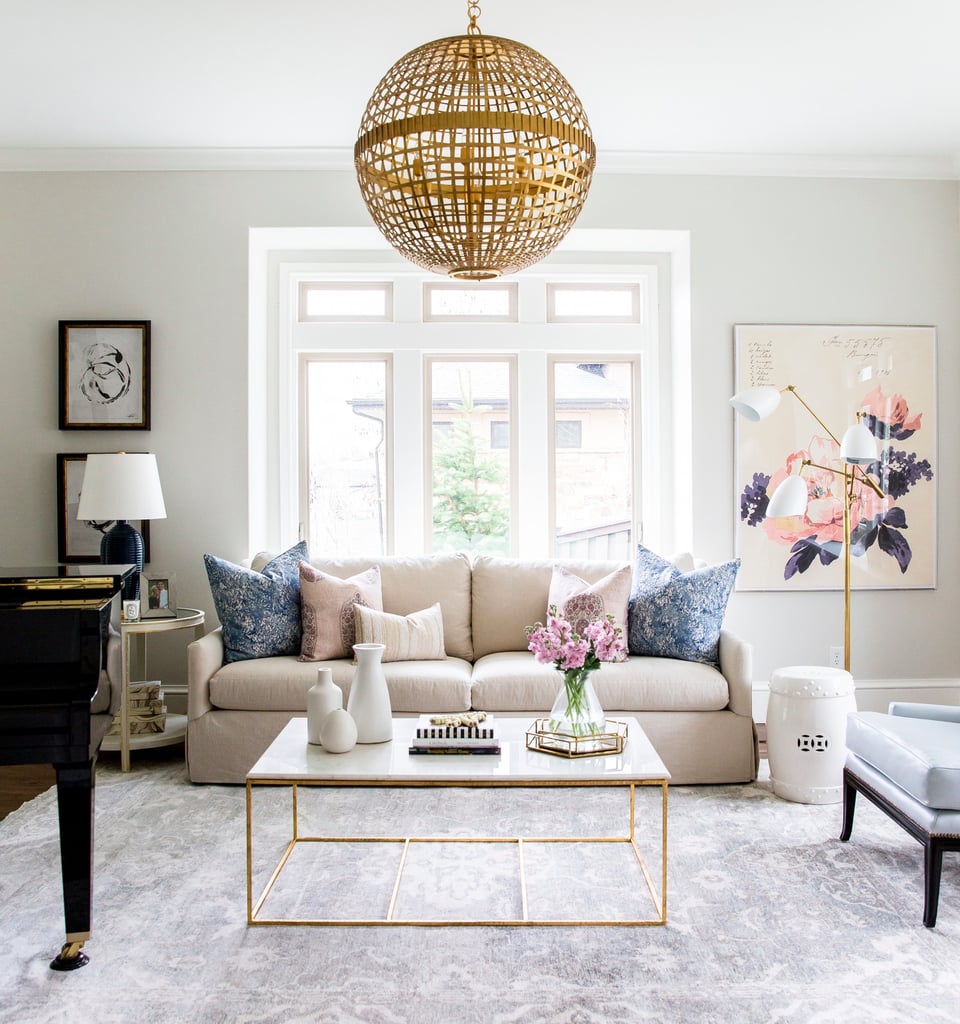 Image Source: Studio McGee
Image Source: Studio McGee
Sure, graduation and your first job are huge steps towards adulthood, but what’s the true sign that you’ve officially made it? When you get the keys to your very own apartment. Moving into your first (or second) place is a big deal, but we all know it can come at a high price. It was a rude awakening the day we realised our Pinterest-fuelled dreams didn’t exactly fit our budget. But don’t give up hope! Having an apartment that’s chic and affordable is totally possible. The key is knowing the tricks and hacks that will help you save money without skimping on style. That way, you’ll save your money for what’s really important . . . the housewarming party.
1. Upgrading your wall art? Don’t spend a fortune
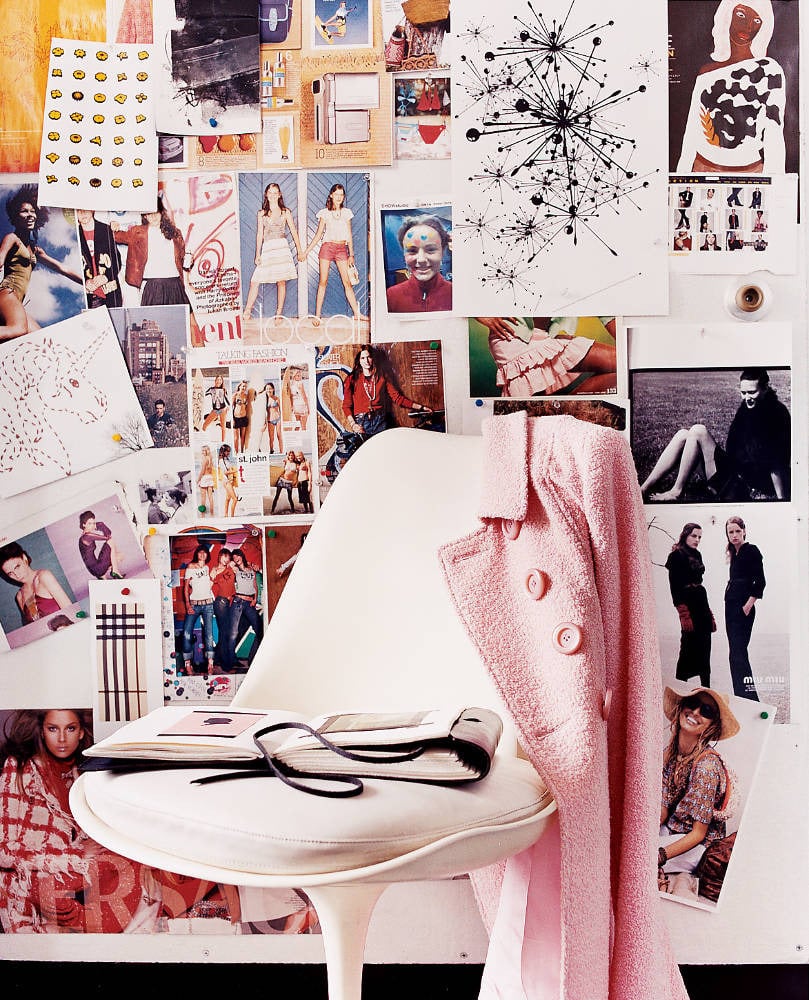 Image Source: Domino
Image Source: Domino
Building up an art collection doesn’t have to be crazy expensive. If you can’t bare white walls, there are plenty of websites that specialise in affordable art.
2. Add Something Old
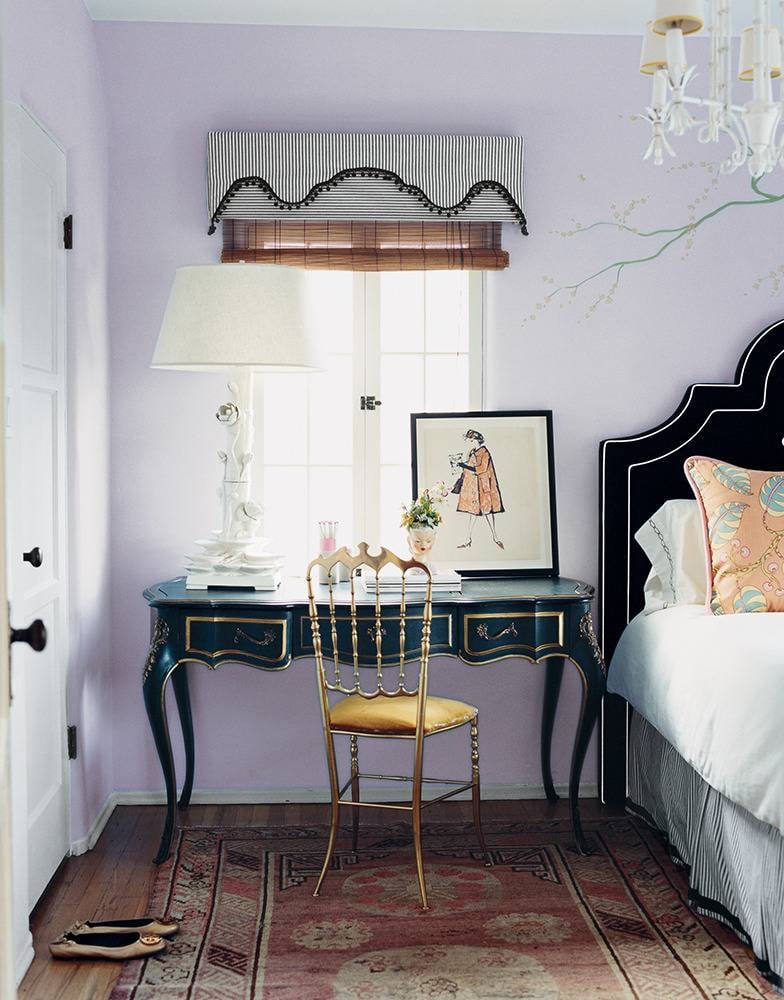
Image Source: Melanie Acevedo for Domino
Add character and save cash by buying your decor secondhand, a trick from former Bachelorette star Jillian Harris. Local thrift stores and flea markets are all full of fun and practical finds that won’t cost a fortune.
3. DIY When You Can
 Image Source: Dana Miller / House*Tweaking
Image Source: Dana Miller / House*Tweaking
If you’re up to the challenge, take on a DIY project — the beautiful results might surprise you. This bar cart is actually an inexpensive Ikea kitchen cart that was repurposed with green paint, wood stain, a bottle opener, and a towel bar.
4. Think Long-Term, Not Just For Now
 Image Source: POPSUGAR Photography / Adrian Busse
Image Source: POPSUGAR Photography / Adrian Busse
Since it is likely you’ll be moving around for the next few years, pick items that can travel with you. Avoid oversize furniture and be sure to invest in pieces you’ll love for years to come.
5. Master the Art of Paint
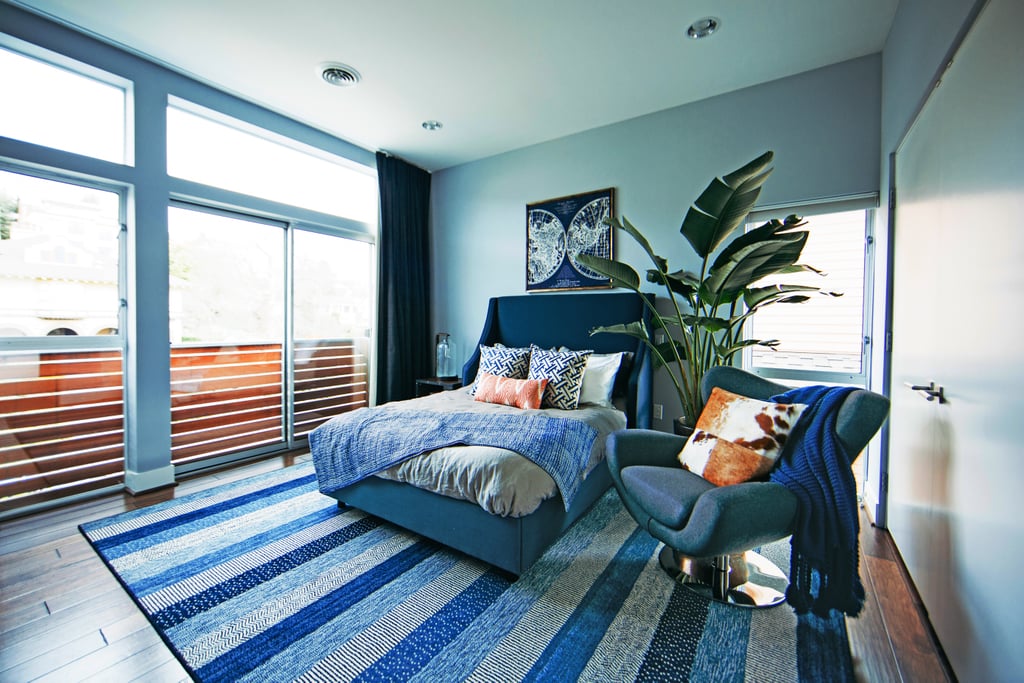 Image Source: POPSUGAR Photography / Adrian Busse
Image Source: POPSUGAR Photography / Adrian Busse
Even the grungiest flea market piece has potential to be beautiful. A fresh coat of bright paint can make all the difference and will help your space look dressed up, even though you’re on a budget.
6. Do Double-Duty
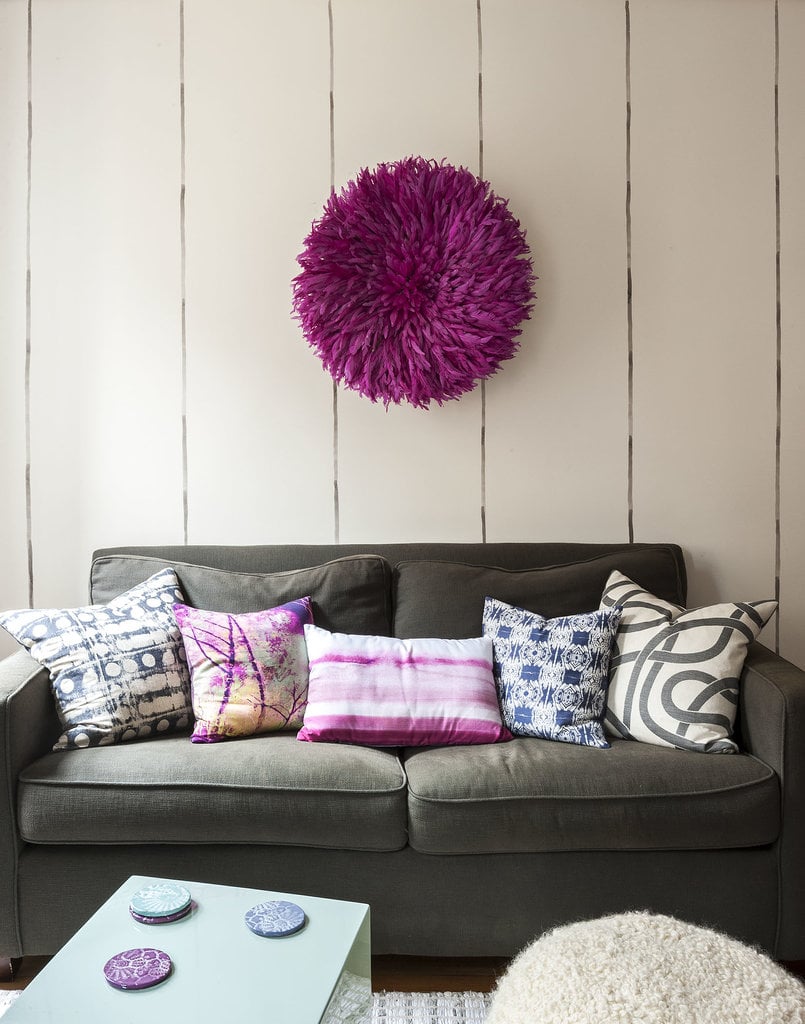
Image Source: Matthew Williams via LABLstudio
Short on space and money? Make sure the few pieces you do invest in can serve more than one purpose. This coffee table doubles as extra seating when guests come to visit.
7. Make the Mattress Your Splurge
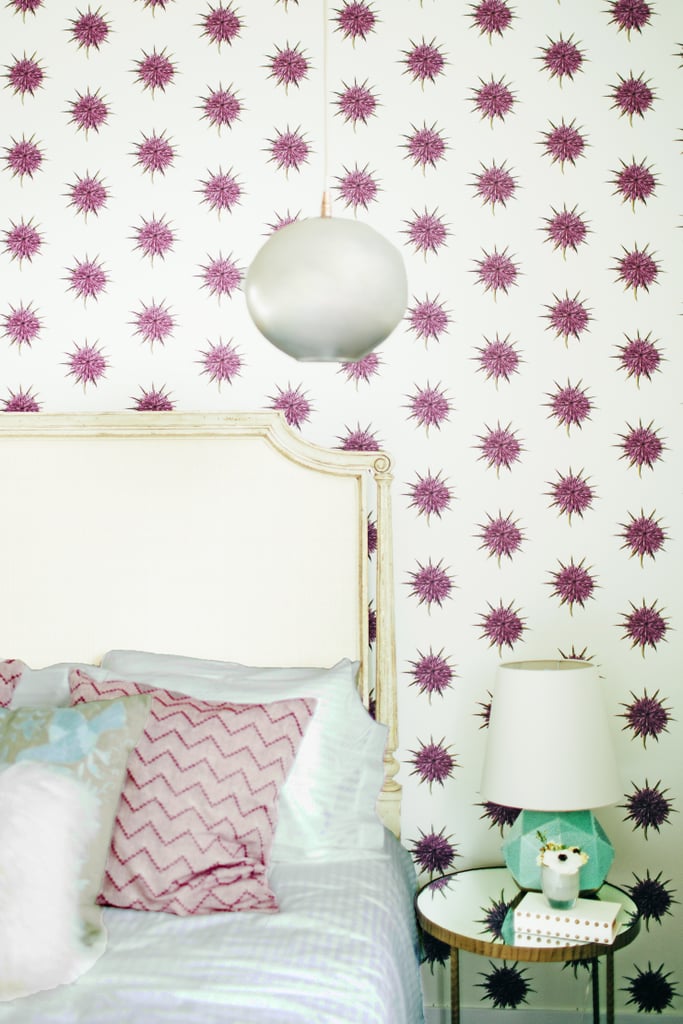 Image Source: POPSUGAR Photography / Adrian Busse
Image Source: POPSUGAR Photography / Adrian Busse
Money is tight when you’re moving into a new place, but the one thing you should never skimp on with quality is your mattress. Not only will it get a lot of use, but going cheap can lead to back pain and health issues. Check out these tips for buying a quality mattress.
8. Raid the Garage
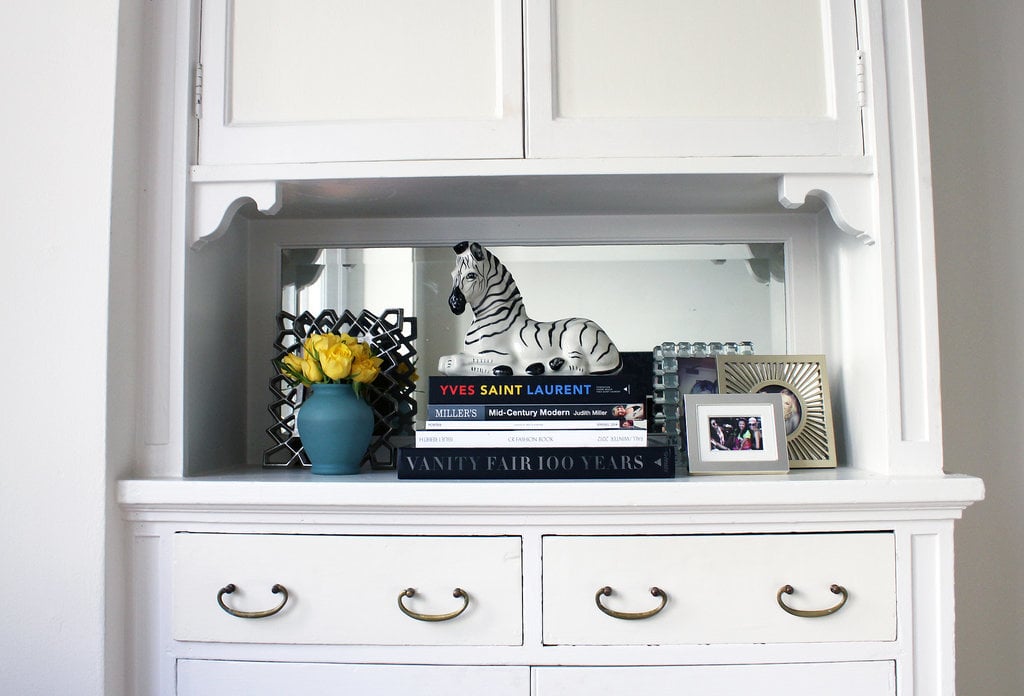 Image Source: POPSUGAR Photography / Lisette Mejia
Image Source: POPSUGAR Photography / Lisette Mejia
If you have relatives nearby, get busy exploring the garage or attic for handy items you can commandeer for yourself. Things like silverware, old furniture, or art could make their way into your stylish studio.
9. Get Creative With Storage
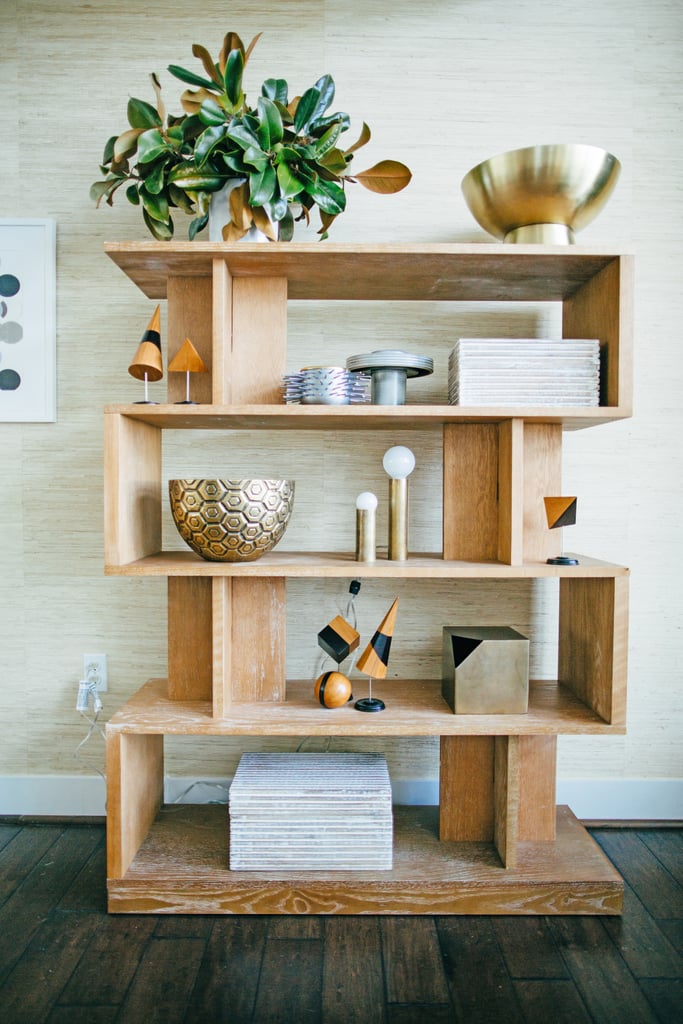 Image Source: POPSUGAR Photography / Adrian Busse
Image Source: POPSUGAR Photography / Adrian Busse
Yes, your first apartment is probably pretty tiny, but use organisation to your advantage. While you can keep big items tucked away in a box under the bed or in your closet, keep jewellery, makeup, and other small collectables stored out in the open.
10. Buy Budget-Friendly Essentials
 Image Source: POPSUGAR Photography / Adrian Busse
Image Source: POPSUGAR Photography / Adrian Busse
No adult should have to live with paper plates and sheets for curtains, but if you’re worried about all the little things adding up, there are ways to get what you need while staying on budget. Shopping for affordable apartment essentials means that you can squeeze everything you need into your budget.
Comments (0)
23 March 2018
By portermathewsblog
via popsugar.com.au
It’s no wonder the co-founder of Done & Done NYC, a professional organising, de-cluttering, and staging business, is just as organised in her personal life as her professional life. Abby Löfberg has the scoop on how Kate Pawlowski’s daily routine stays on track.
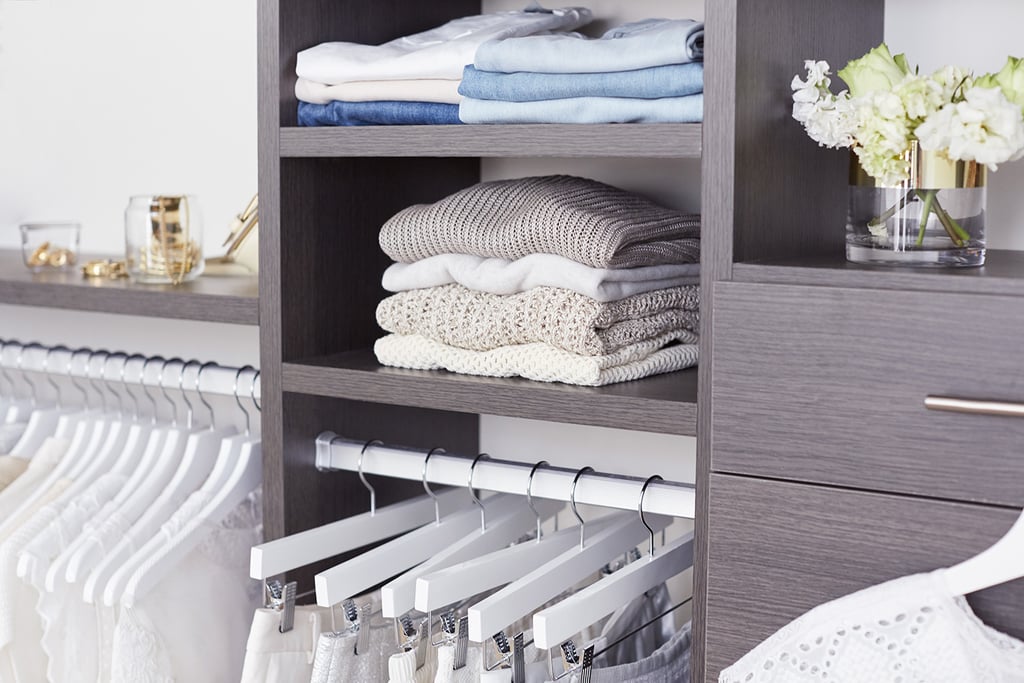 Image Source: ShopStyle Photography
Image Source: ShopStyle Photography
Our co-founder Kate Pawlowski is 28 years old and the most high-functioning person I know. (Read her bio here) What’s great about her is that she gives advice that someone like me (who doesn’t “run a home” and is not naturally organized) can actually follow and implement.
I grilled her about her entire day, and gleaned a couple of great habits that she does unconsciously and without thinking. She says that these are so easy, they don’t feel overwhelming — they become ingrained into your habits, and you end up looking forward to the feeling of relief you get after such little effort, like brushing your teeth in the morning.
1. Morning
When she wakes up, Kate fills her kettle and turns it on. During the three minutes it takes to boil for her morning tea, she unloads the dishwasher, so she never has to keep dishes in the sink and just pops them straight in the dishwasher all day. Imagine never having to have a terrifying sink full of dirty dishes! (I actually do this too. It works!)
2. Showering
She keeps a magic eraser in her shower and wipes down the walls right after she shuts the water off to keep it clean and mildew-free. This prevents slime and grime from building up in the grout, and she never has to do a deep shower clean other than during her seasonable deep cleaning sprees.
3. Getting dressed
She is all about stylish basics that work for multiple purposes — especially with her underwear. When Kate buys her undies, she makes sure they match a few of her existing bras, so she can quickly pull out a pair and be in a matching set. When she takes off her clothes at night, her bra and undies go right into the mesh delicates bag she has hanging on her closet door, so they’re ready to pop in the wash once a week. (She actually has a bunch of these bags in different sizes and washes most of her clothes this way to take care of them). This way, she never runs out of underwear and has to do a last-minute wash while wearing granny panties.
4. Evening
She spends seven to 10 minutes every night tidying her desk, her coffee table, folding throw blankets, and starting the dishwasher so she can wake up fresh in the morning and get right to coffee and work.
5. Shopping
Living in an organised way is not just about where you put your things — it starts with what you let into your house in the first place. Kate is vigilant about her shopping habits — she does research on clothes and reads reviews before she buys them. She knows what cuts work for her and which materials she is most comfortable wearing. She also takes care of her clothes really well by washing everything on a delicate cold-cold cycle. This way, her clothes stay in top condition and she doesn’t have to buy as much. This is part of a philosophy we at Done & Done NYC call Owning Well — in other words, how to own less things that work perfectly for you is a more efficient and less expensive way to have an organised space.
Comments (0)
19 March 2018
By portermathewsblog
via domain.com.au
Getting your foot into the door isn’t cheap, but sometimes it’s where the money is spent that comes as a shock to first-home buyers.
It’s not over once the deposit has been saved and the winning offer made. Experts have identified five areas where hidden costs might be lurking, and how a buyer can avoiding paying more than they need to.
1. Pre-purchase research
Anna Porter, a property valuer and principal at strategic property investment company Suburbanite, said budgeting for pre-purchase inspections is important.
“There’s a whole range of reports you can get – you can spend $5000 just on due diligence,” she said.
What could look like a minor issue may cost more in the long run.Photo: Erin Jonasson
Not doing the research can prove costly. Mortgage Choice CEO John Flavell said it was vital to conduct proper pest and building inspections.
“It is a small amount to pay for peace of mind and it can help you to avoid buying a property with structural faults or insect infestations,” he explained.
CM Lawyers head conveyancer Alex Sapounas said that trying to avoid buying quality building reports was also a common error.
“Unfortunately there’s no fallback position with major structural flaws.”
Strata reports were also very important, he said, particularly regarding special levies and changes to the standard bylaws.
2. Conveyancing fees
Some first-home buyers are surprised to discover they need to engage a conveyancer, or are alarmed by the price.
Rules around conveyancing vary from state to state, but Mr Sapounas said first-home buyers should be talking to a conveyancer at the start of the buying process.

Mr Sapounas said some buyers didn’t even have the contracts reviewed prior to bidding at auction.
He said it was common to see first-home buyers making mistakes that could cost far more in the long run than the $1500 to $2000 conveyancing fee.
Many did not understand the difference between pre-approval and actual approval, how much of a deposit they need, and when they could pull out of the purchase of a property.
“A lot of first-home buyers don’t even have the contract reviewed prior to auction,” he said.
3. Government and bank fees
Mr Flavell identifies stamp duty, the property transfer fee, and mortgage registration fee as government costs new buyers need to know about.
When it comes to home loans there’s the loan application fee, ongoing bank fees and the lender’s property valuation to consider.

A slowing market might impact whether on not a buyer opts for LMI, or a 20 per cent deposit. Photo: Dominic Lorrimer
Another potential expense is Lender’s Mortgage Insurance – LMI – which protects the lender from losing money if the borrower defaults on their loan, and the sale of the property doesn’t cover the money owed.
Generally, it’s a condition of borrowing with less than a 20 per cent deposit, and the cost can be included in the loan amount.
Analysis from financial comparison site Canstar shows that first-time buyers who opt for a 10 per cent deposit and LMI as opposed to taking longer to save a 20 per cent deposit could also wind up paying more overall.
It depends on the growth in property values, with 3.83 per cent annual growth being the break-even point for a $500,000 purchase. If growth is slower, buyers could be better off saving the 20 per cent deposit, but if the market moves faster, LMI is outweighed by capital gains.

4. Moving in, and moving tenants in
Ms Porter said first-time investors often don’t plan for professional cleaning fees.
“When a vendor moves out, there’s not a requirement for how clean the apartment has to be,” she said.
If the property is left in a passable condition, but not clean enough to meet the standards of a rental property, it might require a professional cleaner, and a $500-plus outlay.
Dixon Advisory’s head of advice Nerida Cole explained there could be quite a big “gap in expectation” for new buyers, in terms of what they’re prepared to live with compared to what a tenant expects.
“If you want to have a good tenant, you want to make sure property is presented well.”
 New homeowners may be left to foot the cleaning bill when the vendor moves out. Photo: Steven Siewert
New homeowners may be left to foot the cleaning bill when the vendor moves out. Photo: Steven Siewert
She added that the early period can be a pressure point for investors who expect to receive rent straight away.
“There can be a bit of a delay in the cash flow coming in from the rent. Up front there’s the property manager costs, the campaign to get a tenant – but you are paying interest from day one.”
Owner-occupiers also need to manage expectations and expenses. “It might take you two years to furnish the house properly, rather than racing in and trying to make it look like a Vogue magazine.”
5. Landscaping and repairs
Ms Porter recommends keeping aside $4000 for $5000 as a maintenance slush-fund.
“You can buy a property and suddenly the hot water dies, or the airconditioning dies and you have to replace it,” she said.
Ms Cole said the cost of upkeep for a backyard can come as a surprise for buyers upgrading from an apartment.
“Plant trimmers, lawnmowers, it does add up. When you’re a new home buyer, you don’t have much cash up your sleeve.”

There can be some surprises in moving from an apartment to a free-standing house with a backyard.
Landscaping can also be costly, especially for new builds. Ram Venkatagiri, from Financial Quotient, says that the price of structures like retaining walls can come as a shock to some buyers.
“Sometimes they cannot be determined by the builder at outset, until they perform site works after the building contract has been entered into,” he said.
He noted that blinds, curtains and security grilles aren’t always included in the price of a house and land package, adding thousands to the overall cost.
Comments (0)
16 March 2018
By portermathewsblog
via domain.com.au
In a world of flat-packed and mass-produced, how do you know if your new furniture is made from the real deal?
Before navigating a market flooded with fake wood and faux fabrics, consider the following expert tips and buy with confidence.
How to recognise real timber
“As makers we have the opportunity to use a variety of beautiful hardwoods,” says designer Nathan Day. “Australian timbers like jarrah and blackwood, and North American species like oak and walnut are classics. People love them because they machine beautifully, are stable, and age gracefully.”
 “As makers we have the opportunity to use a variety of beautiful hardwoods,” says designer Nathan Day. Photo: Nathan Day Design
“As makers we have the opportunity to use a variety of beautiful hardwoods,” says designer Nathan Day. Photo: Nathan Day Design
Designer Karl Young from Saltwood Designs uses solid timbers that are sustainably sourced and recycled. “There is demand for furniture made from existing pieces of the house. I’ve made vanities and tables from old roof timbers!”
While 100 per cent timbers are readily available in various guises, Day has noted an increase in man-made versions. “Reconstituted timber products, plastics and other materials are creeping into the market. They are processed to look like wood with stains, which is meant to make them look expensive.”
Despite the inferiority of laminates and particle boards, Young maintains that they do serve a purpose. “The substrate may not be a sustainable one, but in using veneers you are cutting down less trees, and if done right they will still last and look beautiful.”
 Walnut and oak bedside tables. Photo: Saltwood Designs
Walnut and oak bedside tables. Photo: Saltwood Designs
Origin
Check the material’s origin and buy from someone who represents trusted design brands. “Ask them to point out differences in quality in material, construction and finish,” says Day, “and avoid replicas. They are nothing more than a cheap imitations.”
 Designer Karl Young from Saltwood Designs uses solid timbers that are sustainably sourced and recycled. Photo: Saltwood Designs
Designer Karl Young from Saltwood Designs uses solid timbers that are sustainably sourced and recycled. Photo: Saltwood Designs
Meet the maker
“Find out their values,” says Young. “They should understand your needs and as the client, be involved from the very beginning – from design through to finished product.”
Weight and firmness
Consider the product’s weight and press your nail into its surface to gauge denseness, before comparing your findings with authentic wood species.
Grain colour
If the colour of the wood isn’t natural or stained, it may not be 100 per cent genuine.
Price
“You get what you pay for,” says Day. “Quality generally costs more.”
Patina
Check for surface colour. Most woods turn a shade of gray, darken, become redder or lose colour, if exposed to the elements.
Grain lines
Grain lines should run consistently over the edge of the table. If they don’t, it could be veneer imitating timber.
End grain
Check for growth rings formed by the yearly growth of a tree. They are difficult to properly replicate.
How to recognise natural fabrics
When it comes to soft furnishings, plant-based fabrics like cotton and linen, and animal fibres like silk and wool are the most coveted. They look expensive, offer breathability, natural temperature regulation and superior durability.
“Fabric choice comes down to its end purpose – colour, pattern, texture and budget,” says Sarah Elshaug from Maitland Interiors. “By starting with the end-in-mind we ensure the fabric is fit for purpose and durable.”
Polyester blends masquerading as linen are the most common misrepresented fabric says Elshaug. “Using a synthetic means you are sacrificing on comfort and that luxurious feel of a natural fabric.”
Elshaug says while inferior, cheaper blends do have their place. “They offer stain resistance and colour fastness, so in a family home, opting for a sofa covered in polyester blend fabric will ensure longevity. To the untrained eye it can be hard to tell which fabric is what when looking at it,” says Elshaug.
Need-to-knows when purchasing natural fabrics:
The burn test
“Find a safe spot outside or in your laundry trough where you can burn a section of fabric,” she says. “When you burn a fabric and it turns to powder, it’s natural. If it melts and beads up like plastic with a sweet odour, then it’s synthetic.”
Feel and weight
“Gauge weight, quality and content,” she says. “I pay attention to how a fabric feels in my hand or moves when I give it a shake. Not only does it help determine its authenticity, it also tells me how it will behave.”
Australian standards
“Fabrics sourced from a reputable show room will have a data sheet specifying its composition and testing that has been done to meet Australian standards,” she says. “Sight this documentation and if you’re not satisfied, move on. With a global economy, we are spoilt for choice and can source beautifully made fabrics from around the world.”
Comments (0)
12 March 2018
By portermathewsblog
via reiw.com.au
 Perth’s vacancy rate has dropped to 5.3 per cent – the lowest since July 2015.
Perth’s vacancy rate has dropped to 5.3 per cent – the lowest since July 2015.
REIWA President Hayden Groves said Perth’s latest vacancy rate for January 2018 had improved significantly since June 2017.
“It’s quite remarkable to see it this low considering seven months earlier Perth’s vacancy rate soared to 7.3 per cent – the highest we have ever experienced, and now it’s back at levels last seen in 2015.
“The vacancy rate is a good indicator for how the entire rental market is tracking, with reiwa.com data for February showing stable rent prices and declining listing levels. Leasing activity did drop off in February, however levels are still healthy and trending above long term averages,” Mr Groves said.
The reiwa.com vacancy rate is compiled using data obtained from a monthly survey of REIWA members. The survey details how many rental properties members manage and how many of those are vacant.
Mr Groves said there were a number of factors that had contributed to lowering the vacancy rate, such as an increase in population growth and a reduction in average tenure time.
“Population growth in WA has started to improve. Rental markets always feel the effects of population trends, with new entrants into the state the first to soak up rental stock.
“Tenants are also moving more frequently. In 2014 for example, the average tenure time was 45 months, fast forward to 2017 and it’s now 34 months, which is almost a full year less. This has led to an increase in leasing activity which has driven demand for rentals and had a positive effect on the vacancy rate.
“Another contributing factor is the reduction in the number of new dwelling commencements across the Perth Metro area. This has played an important role in lowering the vacancy rate. With less new dwellings coming onto the market, existing rental stock is now being soaked up, which is why rental listings have declined 19 per cent over the last year.
“After a challenging few years for landlords and investors, it’s pleasing to see some parity return to the rental market, with tenants and landlords seeing benefits simultaneously,” Mr Groves said.
Comments (0)
09 March 2018
By portermathewsblog
via popsugar.com.au
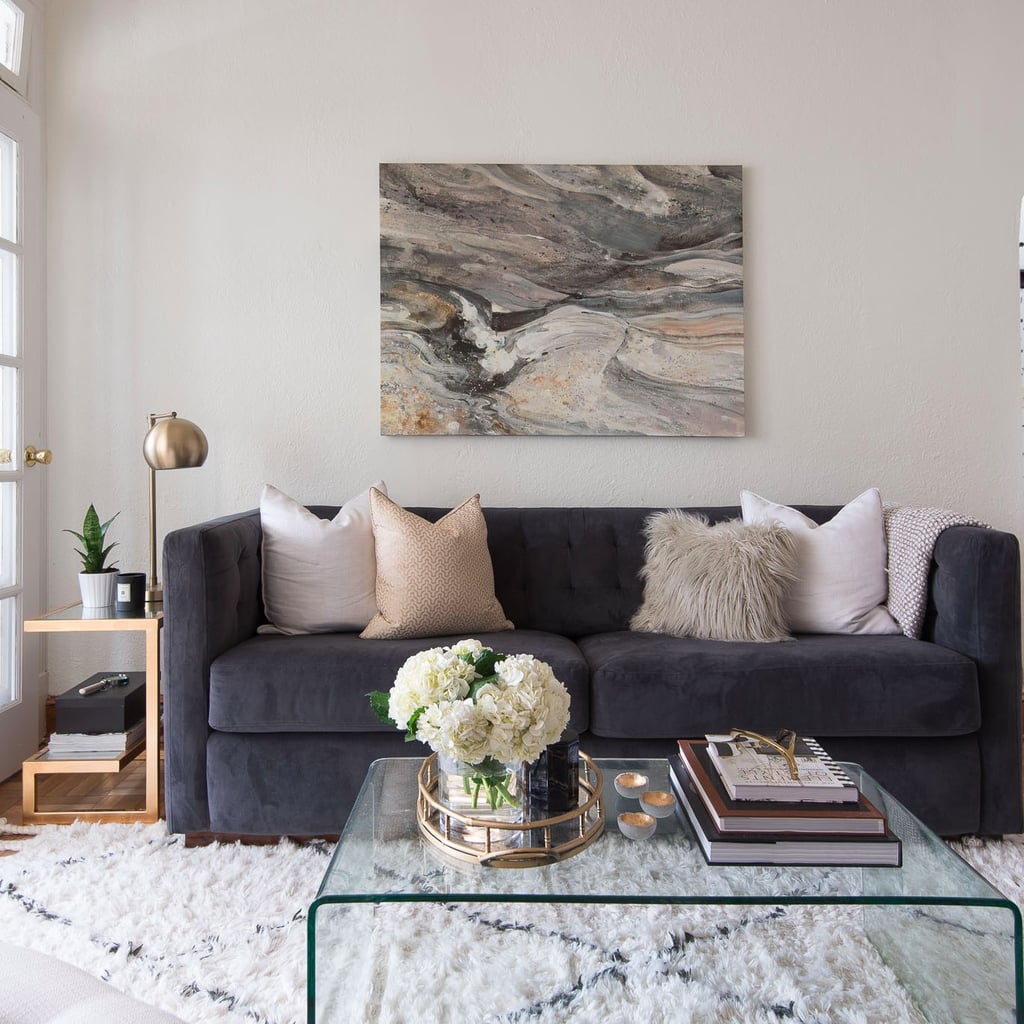
Image Sources: Laura Metzler and Homepolish
The way Shannon Smith transforms a bare apartment into a cosy home might cause you to confuse her for a magician, or an interior design fairy godmother at the very least. The Homepolish interior designer can do wonders to a space no matter how tight the budget or small the square footage.
The secret to creating a stunning home, she says, is to focus on three things when decorating. “I am a firm believer that you don’t need a lot of stuff to make your space feel finished. If you consider these three things — texture, colour, and scale — you can make any space feel cosy.”
Keep reading to hear what Shannon has to say about approaching each.
- Texture: The More The Merrier
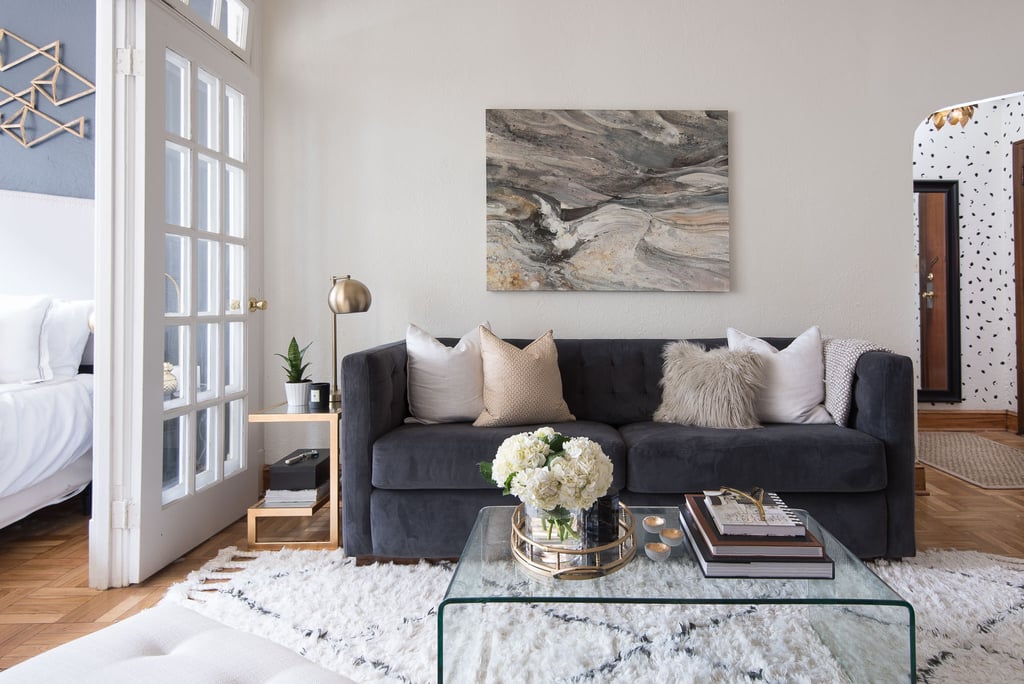
Image Sources: Laura Metzler and Homepolish
“Add texture with area rugs, drapery, vintage pieces, or natural fibers,” Shannon advises.
- Colour: Layer Three
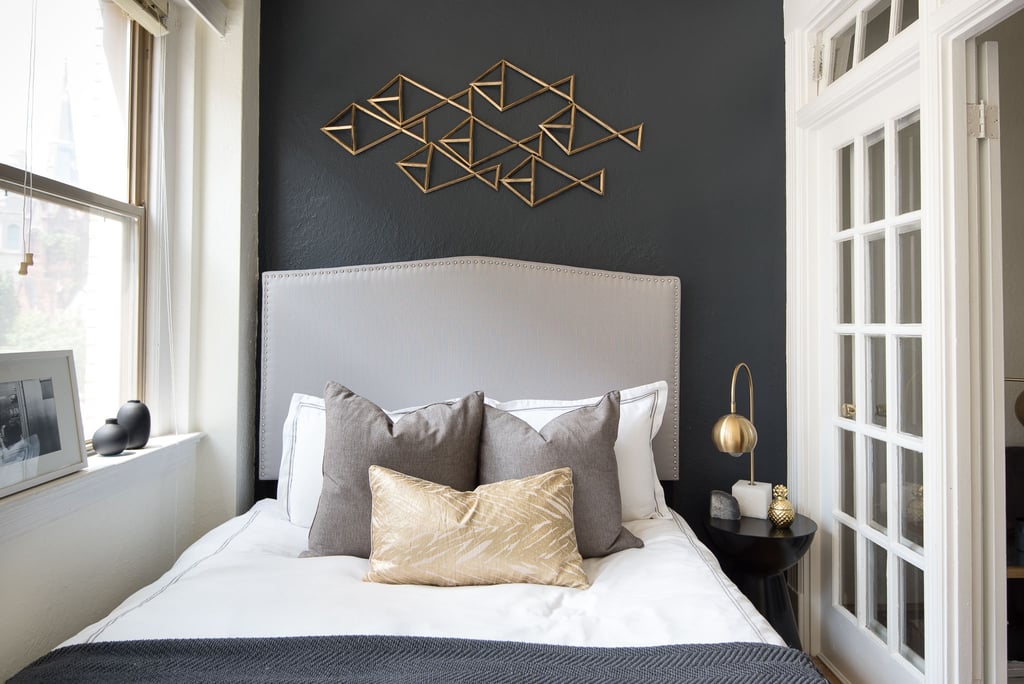
Image Sources: Laura Metzler and Homepolish
“Layer colour in your space to add depth, even if it’s neutral,” she says. “I always try to choose three colours — a light colour, a dark colour, and something in between — and scatter them throughout the space.”
- Scale: Go Big, or Go Home
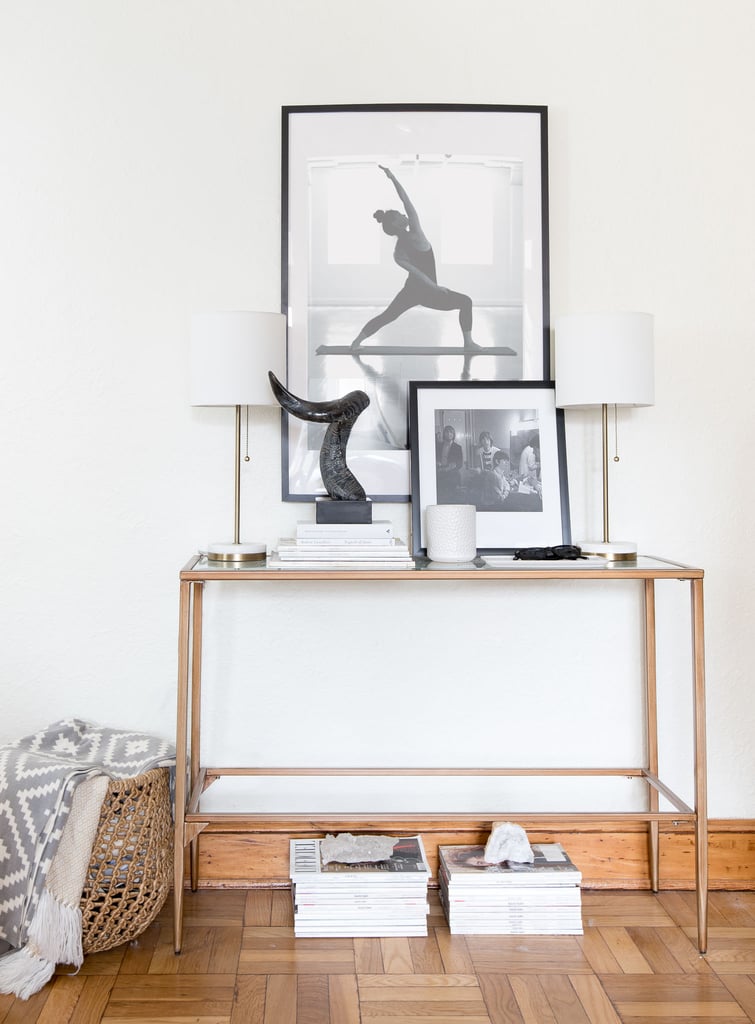 Image Sources: Laura Metzler and Homepolish
Image Sources: Laura Metzler and Homepolish
“Large art pieces, leaning floor mirrors, and big area rugs accentuate the height of the ceilings or the width of a room,” explains Shannon. “If you are worried about living in a small space, focus particularly on this tip as it will usually make your space feel larger.”
Comments (0)